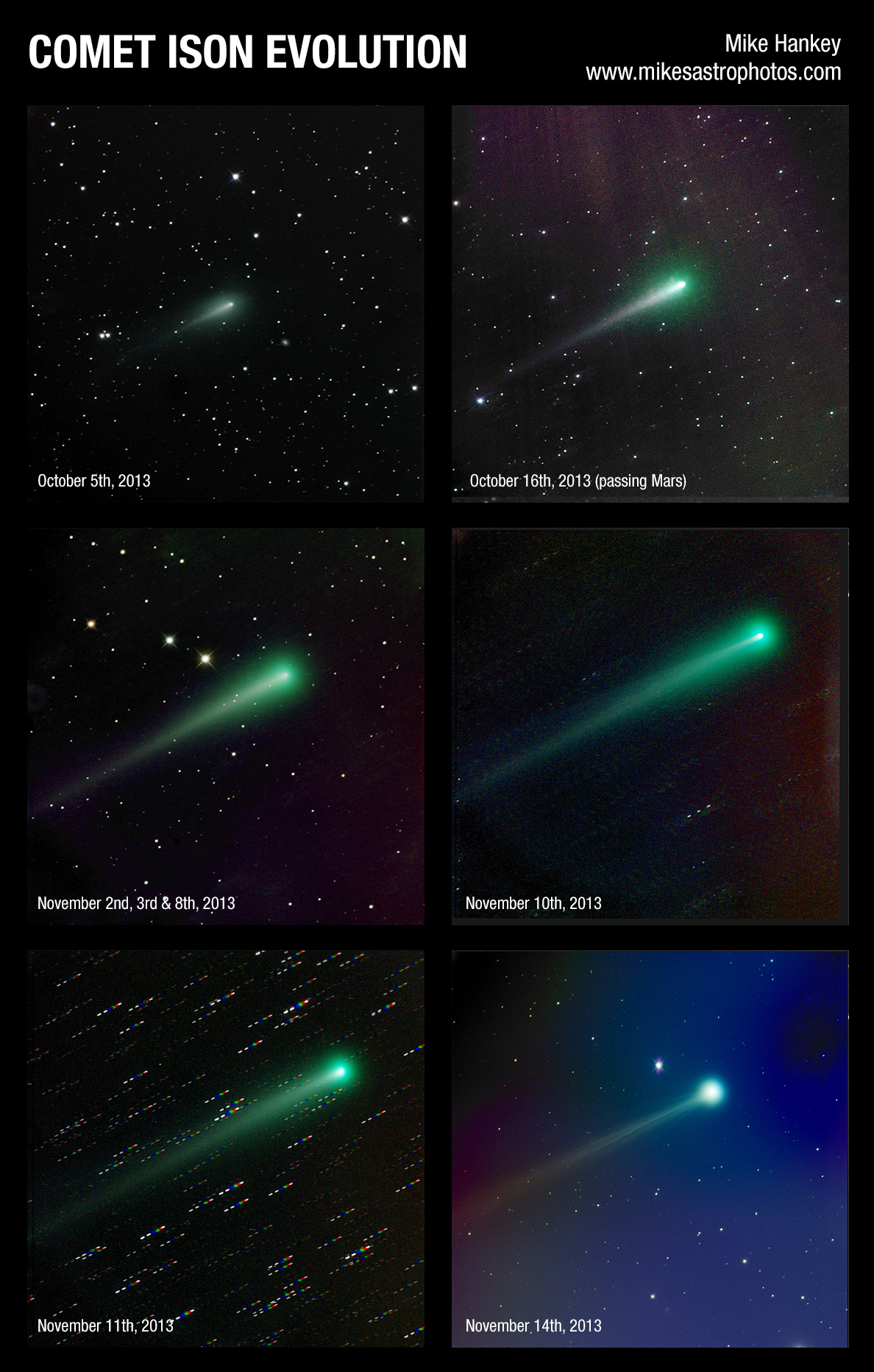Stunning Comet ISON Photos Captured by Amateur Astronomer (Images)

A spectacular set of photos taken by an amateur astrophotographer chronicles the evolution of Comet ISON over the last few months, which has seen the much-hyped icy wanderer brighten so much that it's now visible to the naked eye.
"In September, ISON was just a smudge smaller than most stars," Mike Hankey wrote SPACE.com in an email. "The tail, while visible, was short, faint and had little detail."
Hankey started imaging Comet ISON using a 14.5-inch RCOS telescope located at the Sierra Remote Observatories in Auberry, Calif. He spent roughly an hour each morning imaging the comet remotely from the California observatory while he was at home in Maryland. [Photos of Comet ISON: A Potentially Great Comet]
"I experimented with various exposure lengths, tracking settings and processing techniques. As the weeks went on, the comet grew brighter and larger," Hankey said.
Comet ISON is barreling toward a close encounter with the sun on Nov. 28, when the object will skim just 730,000 miles (1.2 million kilometers) above the solar surface. If ISON survives this close pass, it could put on a great show for skywatchers throughout much of December, experts say.
But the celestial fireworks have already begun.
By mid-October, ISON had grown in size significantly, taking up a respectable portion of the photographer’s CCD chip. Before long, the comet with its tail would not fit in the available field of view. After another two weeks, ISON grew so much that Hankey could no longer fit the comet on his imaging CCD without cropping out some of the tail.
Breaking space news, the latest updates on rocket launches, skywatching events and more!
"The real excitement started, though, on the morning of November 10. As soon as the first image was downloaded from the camera and displayed, I saw a distinct jet shooting out of the coma that I had not seen previously," Hankey said.
The photographer managed to capture startling detail of the increasingly bright ISON on Nov. 14, when the comet entered full outburst mode.
"It was brighter than I had ever seen and had an amazing detail; multiple jets radiating from the coma were evident," Hankey said. Prior to Nov. 14, Hankey had been shooting 180-second exposures, but due to the decreasing window of time he shortened this to 60 seconds.
To see more amazing night sky photos submitted by SPACE.com readers, visit our astrophotography archive.
Editor's note: If you have an amazing photo of Comet ISON or any other celestial object that you'd like to share for a possible story or image gallery, please contact managing editor Tariq Malik at spacephotos@space.com.
Follow SPACE.com on Twitter @Spacedotcom. We're also on Facebook & Google+. Originally published on SPACE.com.
Nina Sen is a freelance writer and producer who covered night sky photography and astronomy for Space.com. She began writing and producing content for Space.com in 2011 with a focus on story and image production, as well as amazing space photos captured by NASA telescopes and other missions. Her work also includes coverage of amazing images by astrophotographers that showcase the night sky's beauty.

